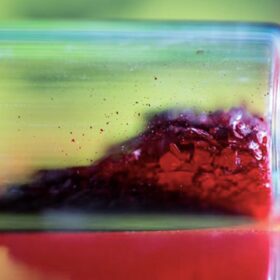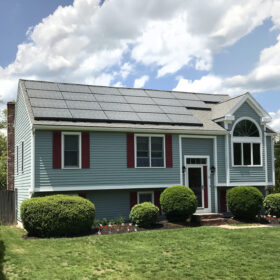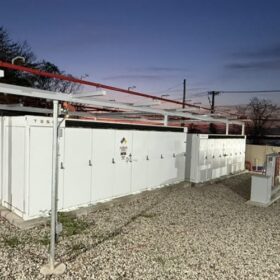Long-duration stability of perovskite solar cells
US scientists have analyzed the impact of “seasoning” a formamidinium lead iodide solution with two-dimensional (2D) perovskites. They have found that the template improved the efficiency and durability of their solar cells.
Swift Solar closes $27 million in funding, plans perovskite solar factory
Swift Solar, a specialist in perovskite tandem photovoltaics, plans to build a factory in the U.S. in the next two to three years to manufacture thin-film solar.
Concentrator photovoltaic module based on surface mount technology
A research group in Canada has optimized the performance of concentrator photovoltaics by using the so-called surface-mount technology for thermal management. The CPV module prototype utilizes four non-interconnected III-V germanium cells, a Fresnel lens, and a transparent glass printed-circuit board.
Longi presents 24.4%-efficient 660 W HPBC solar panel
Intended for applications in utility-scale PV projects, the new Hi-MO 9 module is available in eight versions with power output ranging from 625 W to 660 W and power conversion efficiency spanning from 23.1% to 24.4%.
DOE announces $38 million solar supply chain incubator funding opportunity
The funds support research, development and demonstration projects that de-risk solar hardware, manufacturing, and software products.
Zinc-ion batteries: A less volatile alternative?
At a time of growing demand for battery energy storage, pv magazine spoke with Eloisa de Castro, CEO of Enerpoly, a Swedish company preparing to launch the world’s first zinc-ion battery megafactory on its home turf. Having solved rechargeability issues, the company expects its safe and sustainable zinc-ion batteries, which rely solely on a European supply chain, to increase their market share in the years to come.
Solar module reliability ranked in scorecard
The independent test lab Kiwa PVEL names 53 manufacturers and 388 models–a record number of Top Performers in the ten-year history of the Scorecard.
Researchers build 24.4%-efficient perovskite solar cells with room temperature process
Researchers from the U.S. and South Korea have developed a method to make high-quality perovskite films at room temperature. The film was tested in a conventional perovskite solar cell architecture and the result was a power conversion efficiency of exceeding 24%.
Sunrise brief: Fronius unveils residential string inverter for rooftop solar.
Also on the rise: Vermont becomes first state with Climate Superfund Act. Solar project developers face opposition from Joshua Tree conservationists. And more.
Perovskite tandem solar panel integrator nets DOE investment
Tandem PV integrates perovskites with traditional silicon solar panels, a technology that promises increased power output.















